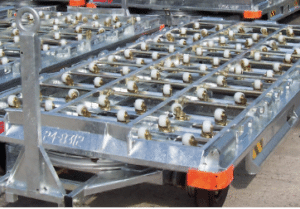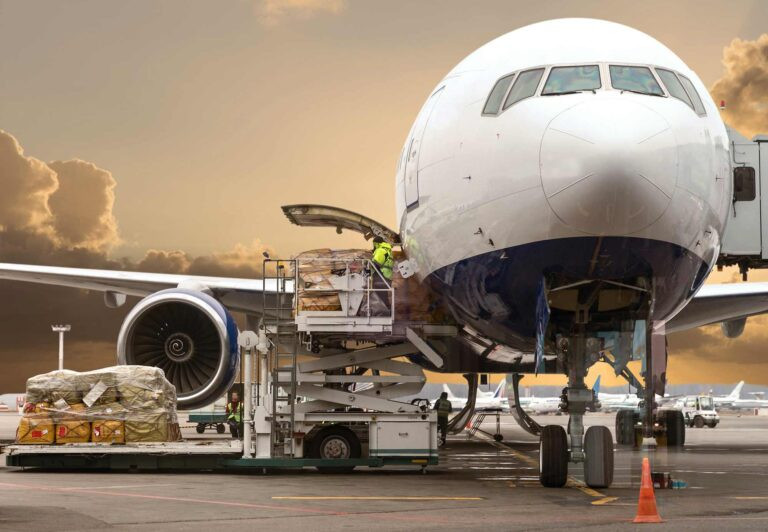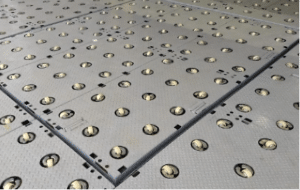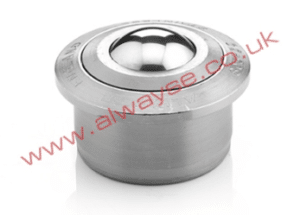Shipping by air is a fast and efficient means of transport for goods. Airlines transport over 52 million metric tons of goods a year, representing more than 35% of global trade by value but less than 1% of world trade by volume. That is equivalent to around $7 trillion worth of goods annually, or around $18 billion worth of goods every day. With so much air cargo being shipped worldwide and so many different parties involved in the supply chain, it is important to take a look at cargo handling for air transport.
Why Is Cargo Handling So Important?
Cargo handling is the segment of the supply chain which processes goods landside in the cargo facility. From delivery to the airport of origin until it is ready for loading on the plane, to the unloading at destination and handover to the consignee/freight forwarder, many steps are involved with cargo handling that must be closely followed to ensure shipments are delivered safely and securely.
This process can’t be done well without proper warehousing.
Many storage facilities at smaller and older airports are fairly basic. This has little impact on cargo storage since most cargo does not stay at airports. Generally, exports are time-sensitive, and the imports are high-value, fast-moving goods.
Modern warehouses have loading docks to accelerate truck turnarounds and minimise vertical movements of cargo. Facilities for exports have large areas for scanning, inspection, building palettes, and gathering the cargo for specific flights. Separate facilities for imports have offices and inspection areas to facilitate customs clearance procedures and to allow for segregation of cargo into truckloads. For perishable cargo, these warehouses have temperature-controlled rooms for maintaining the cold chain between the truck and the aircraft. These warehouses also provide some bonded storage for high-value cargo.
Such a high level of traffic requires a highly sophisticated method of handling the goods and, where there is enough traffic and space, airlines or larger forwarders will invest in such facilities.
To move goods within the various facilities air cargo containers are used. These are also called Unit Load Devices, air containers, airplane cargo containers or ULDs and come in two main forms: rigid, enclosed containers and pallet/net combinations. Any cargo handler will require:
- Smooth and precise handling of the ULD
- A cost-effective means of providing this solution
- No additional energy source
Satisfying these requirements can be achieved in 2 ways: a ball deck or a castor deck.
Both solutions enable a ULD to be moved easily around the facilities – but there are differences.
Ball Decks vs Castor Decks
Below is a typical example of a ULD being moved in a warehouse:
Castor decks are mainly used for lighter loads and for applications that have a more flexible construction as the larger castor wheel provides a bigger surface area for the goods to sit on.
Whereas ball decks using Always 805 Air Cargo Units have a higher load rating (up to 500kg per unit – the highest in the market) and can therefore handle containers with a far higher weight. ULD’s weighing up to 10 tonnes can be moved effortlessly by the operator with no additional power requirements.
However, the main difference is the cost. Castor decks that are used in warehouses with foot traffic require an additional top deck, so the operator can safely walk on them.

This means the deck is approximately 30% more expensive compared to a deck using Ball Transfer Units. Always Air Cargo Units enable the designer the flexibility to use meshed or solid floor plates and they only require apertures for the units to fitted.
Ball Transfer Units have become an indispensable element of cargo handling operations – their outstanding low friction and multi-directional movement qualities being well known. Less celebrated but just as crucial is their ability to endure the elements and remain operational, with minimal maintenance.

As a result, Alwayse Ball Transfer Units can be found in cargo facilities around the world. Fitted on ball decks and dollies, our units allow for the smooth and easy movement of ULDs and heavy cargo. We also manufacture units that are used extensively in baggage handling.
Alwayse Air Cargo Units
Setting the industry benchmark, Alwayse ball transfer units are the go-to option for specifiers of ball decks – having undergone successful testing
with numerous express couriers and military clients. Units are available for the most arduous uses, with slotted bases to allow for escape of debris and the ability to handle the heaviest air cargo containers.
Longevity isn’t the only thing setting ball decks apart – Alwayse ball units provide a number of benefits compared to standard castors:
- Smooth & instant movement in any direction – the ball bearing provides zero offset without any swivel/turning circle of wheel required
- Safer – zero offset removes need for gaps in platform around castor swivel area (reduces trip hazard)
- Very low friction – minimal force required for ULD movement (easy movement facilitates quick transfer of cargo, as well as reducing back injuries)
With several different units designed specifically for cargo handling, Alwayse can supply the best solution for your project.










